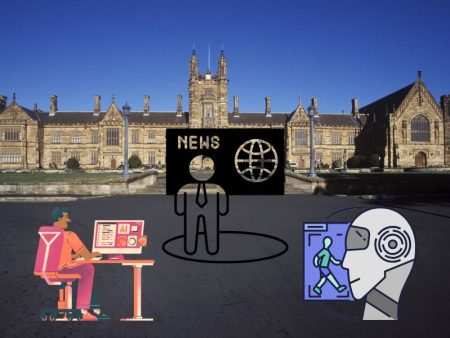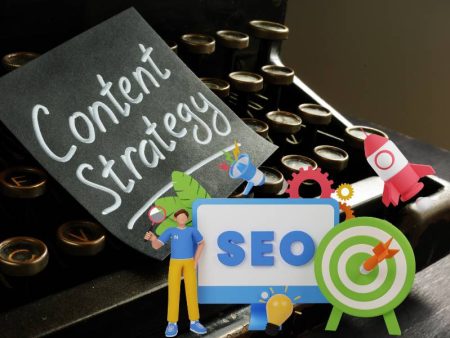Have you ever wondered if SEO is dying… or just evolving? In 2025, there’s a new twist: predictive AI analytics helping marketers forecast trends, shape content, and outrank competition before it’s even surfaced. No more chasing last month’s keywords—now you’re catching next quarter’s patterns before anyone else.
This post is a deep dive into that shift. We’ll explore how AI-driven analytics can future-proof your strategy, blend with human insight, and keep your content relevant for years to come. Let’s journey through non-linear insights, practical dialogue, and real-world wins—no robotic tone, I promise.
What Is Predictive SEO Analytics Anyway?
Let’s face it—traditional SEO tactics are reactive:
- Keyword research based on current volume
- Competitor analysis on live data
- Publishing content, then waiting weeks or months
But with predictive analytics, powered by AI models that analyze trend signals, search pattern shifts, user intent evolution—you can forecast future search behavior.
Think:
“What terms will surge next month? Which topics will become competitive?”
Answered before your competitor even knows what’s happening.
The Human-AI Conversation
Here’s a snippet from a recent strategy session:
Me: “Hey AI, can you forecast which wellness topics will spike this summer?”
AI: “Analyzing search trends, social chatter, seasonal patterns… Looks like ‘DIY adaptogen recipes’ and ‘forest bathing benefits’ may surge.”
Me: “Okay, suggest content roadmap—three article ideas, probable search volume, title ideas.”
AI: Generates roadmap with volume estimates and seasonal timing
That felt like planning a month ahead with a data scientist who never sleeps. And it works—publishing ahead of the wave gives you first-mover advantage.
x
That was the moment I realized SEO can be proactive, not reactive.
x
You’re not chasing rankings—you’re shaping them.
Why Predictive SEO Matters
- Beat the trend before it becomes a trend—capture low-competition SERPs
- Optimize seasonality—time content for holidays or events
- Improve resource allocation—focus on topics with rising potential
- Drive sustainable traffic—instead of chasing doomed keywords
It’s strategy that feels more like investing than gambling.
Non-Linear Workflow: Mix, Match, Iterate
I don’t work step-by-step anymore. My process feels like jazz:
- Start with annual forecast prompts
- AI forecasts 100 trends
- I filter top 20 by brand fit
- AI suggests content formats
- I inject personal insights, case studies, tone
- Publish early
- Monitor emerging signals and optimize
That zig-zag process keeps everything fresh and flexible.
Emotional Nuance: Not Just Data Points
Our role isn’t only technical—it’s emotional. Here’s why:
When adapting predicted topics, I ask, “How do people actually feel about this?” I might prompt the AI:
“Forecasted topic: forest bathing. Suggest working titles that connect emotionally.”
It gives: “Why Forest Bathing Feels Like a Hug for Your Mind.”
A title like that? It resonates—and it shows up in search with emotional trigger terms like “feel,” “mind,” “hug.” That’s where SEO meets empathy.
Real-World Success: Outdoor Gear Brand
A friend’s outdoor gear brand used predictive SEO. In Spring 2025, AI forecasted camping season trends:
- Ultralight backpacking
- Portable solar panel cookers
- Forest bathing accessories
They published ahead—February for camping content, March for solar cookers. They launched a forest bathing guide with emotional tone and personal stories. Within weeks, their evergreen pages started ranking in April—well before competitors noticed. Traffic grew 60%, even before the actual camping season.
Seamless Integration of Tools
Many SEO pro tools now embed predictive analytics:
- Future keyword forecasting
- Query intent classification (like “informational” vs “purchase”)
- Seasonal performance models
But you don’t always need enterprise tools. Even spreadsheet-style AI integrations can let you… ask a spreadsheet: “given past 5 years trends, what terms will grow next spring?” It may feel sketchy—but it works.
When AI Is Wrong—and What You Do
Not all predictions hit. One year, AI forecast “urban mushroom foraging,” but it flopped—no search volume followed. Here’s my response:
- Double-check data sources (social vs search)
- Pause on writing full long-form content
- Turn trend into a short newsletter or micro-blog
- Watch for real signal—if volume spikes, invest fully
That’s the human guardrail—curiosity, restraint, and patience, not just execution.
The Role of SEO Experts
This is where human SEO knowledge shines:
- Contextual relevance
- Competitive analysis
- Real authority building
- Emotional resonance
AI gives toolbox insights. But we need to interpret them—ask questions, challenge assumptions, add stories. So when AI forecasts a trend, we still need to say:
- “Does this match our brand?”
- “Is our angle unique?”
- “Do we have real expertise to share?”
That human vetting is essential before publishing.
Measuring Predictive Success
Track:
- How early content ranks
- Changes in impressions & clicks relative to trend forecast
- Engagement metrics (time-on-page, scroll depth) before emphasis
- Brand mentions in social or communities
If you published early and performance spikes align with forecast, that’s validation. If not—reinforce or pivot.
Creative Dialogue for Better Forecasts
When working with AI:
Me: “Provide 5 working titles for medium-tail keywords around forest bathing.”
AI: “Why Forest Baths Are the Best Hidden Stress Cure,” “Forest Bathing 101: Let Nature Heal You”
Me: “Add a sense of community, wellness + share angle.”
AI: “Join the Forest Bathing Movement: Wellness for You and Yours”
That human–AI dialogue creates richer framing than AI alone—and it doesn’t feel manufactured.
x
Notice how I pushed for “community” angle? Humans add that twist.
x
An AI can forecast, but your brand positions the story.
Scaling Predictive SEO
For larger sites:
- Forecast trending keywords quarterly
- Assign writers based on topic fit and tone
- Build out evergreen + seasonal content calendars
- Monitor AI forecasts monthly and adjust content plans
- Use predictive insights to optimize internal linking and promotions
It becomes a living, breathing strategy—leaning on AI insights, guided by human principles.
Pitfalls to Watch
- Over-reliance on AI forecasts—always have plan B
- Chasing every trend—filter based on brand & capacity
- Ignoring human voice in final content—leads to sterile SEO
- Failing to track results—no feedback equals wasted effort
Emotional & Ethical Considerations
Forecasting what will trend feels powerful—but also risky. What if you misfire and publish about a sensitive topic too soon? Or if you jump on a trend that backfires socially?
We need empathy and ethical thinking:
- Avoid opportunism
- Be culturally aware
- Monitor signals responsibly
- Pause if tone or topic feels wrong
Keywords aren’t just data—they touch real human lives.
The Long-Term View
Predictive SEO isn’t a hack—it’s a mindset shift:
- Strategizing ahead of curve
- Blending AI signals with human storytelling
- Iterating with ethical clarity
- Monitoring results—and course-correcting
It’s not just about content—it’s about connection, relevance, and trust.
Final Thoughts
AI predictive analytics can pull the future into the present. But without human context, empathy, and quality—those insights fall flat.
So—future‑proof SEO like this:
- Use predictive tools to forecast trends
- Vet forecasts through brand lens
- Plan content around forecasted wave
- Infuse with human stories, emotion, distinct voice
- Measure results and optimize
- Repeat—and stay ahead of the tide
That’s the next-gen SEO: part science, part art.
TL;DR
- Predictive AI lets you forecast search trends months in advance
- Blend these insights with emotional and brand context
- Publish early to capture low-competition rankings
- Vet predictions—avoid jumping on every keyword
- Human voice and ethics keep content authentic
- Track performance and iterate
Over to You
What’s the earliest you’ve ever published content for a trend before it caught on? Did you ride the wave—or wipe out when it fizzled? I’d love to swap stories and learn more about how your SEO isn’t just reacting—but shaping tomorrow.


